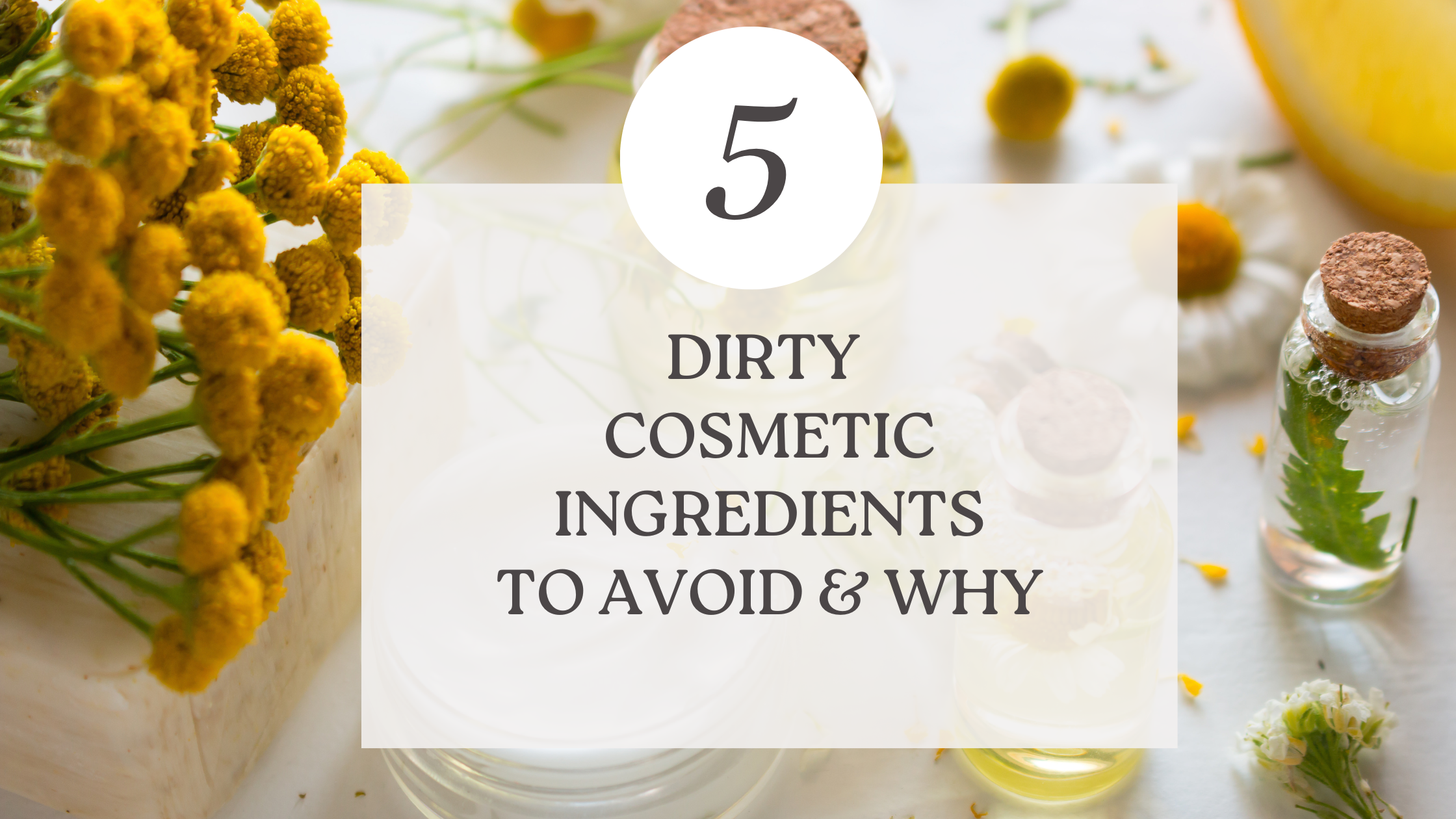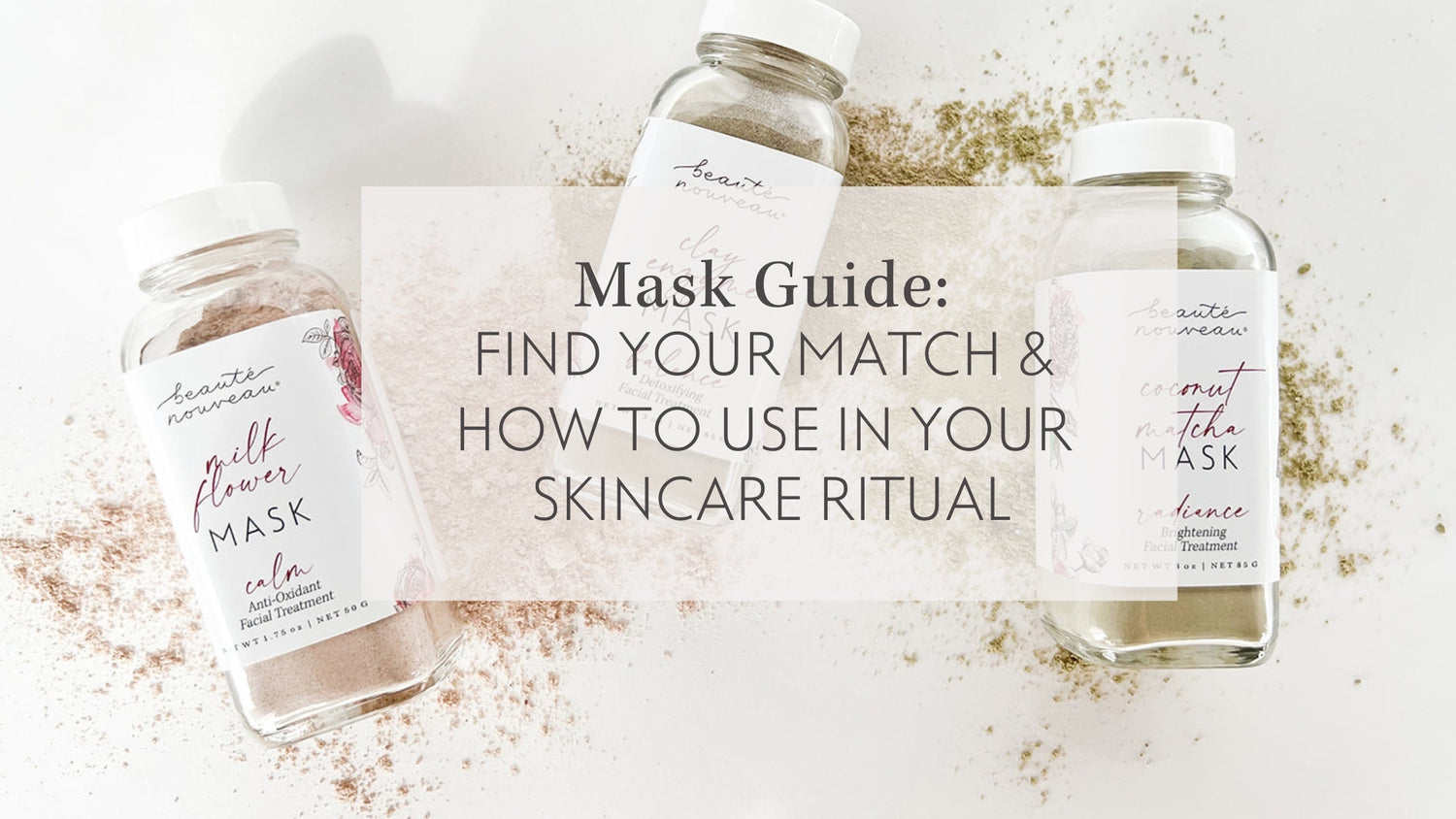
5 Dirty Cosmetic Ingredients to Avoid & Why
Beaute Nouveau
There are plenty of products on the market, but many of them contain ingredients we'd rather not put on our face, or our bodies. Unfortunately, there are also many ingredients and ingredients lists that are not disclosed, making it difficult to know what you're putting on your body. To help you avoid the dirty cosmetic ingredients, as well as learn more about them, we've created a list of the top five ingredients you should avoid, what each of them are, and why it's important to know about them.
Many people don't know that many cosmetic products contain ingredients that are bad for their health. For example, many products contain cosmetic ingredients that can accumulate in the body and can become hormone disruptors, toxic to the nervous system, irritate sensitive skin and cause allergies. Many people don't know this, but the cosmetic ingredients in their beauty products can have a big impact on their health. It is important to know what ingredients are in the products that you use, and the effects that these ingredients can have on your body. People should avoid these ingredients and look for products that do not contain them.
So, how do you know what cosmetic ingredients you should use or avoid?
We make the decision simple. We want you to look for 5 dirty cosmetic ingredients on the label. If you find any of these on a label, most likely there are all kinds of other dirty cosmetic ingredients you will want to avoid as well.
Basically, if you can remember these simple 5 dirty cosmetic ingredients and look out for them on your labels, you will know which products to purchase, and which ones to avoid.
The 5 Dirty Cosmetic ingredients are: mineral oil, silicone, dimethicone, acrylates, and polymers/co-polymers.
1. MINERAL OIL
Most often, we know as "baby oil" and most people have heard that mineral oil should be avoided, but why? Mineral oil is a liquid by-product of refining crude oil to make gasoline and other petroleum products. Mineral oil is the first of the 5 dirty cosmetic ingredients to look for because it is liquid petroleum jelly…just like that yellow goo in your grandparent’s medicine cabinet. Some mainstream cosmetic companies claim that the mineral oils they use in their manufacturing have been ultra-purified and have been used for over 100 years. We will leave it up to you to decide if purified petroleum jelly is your preference for your skin, or if the big box beauty companies use it because it is cheap, shelf stable for a very long time, and is status-quo. Here are two great articles to read for yourself from INstyle and Loreal.
2. SILICONE
TCB Arrow Plastics and Rubber Manufacturing shares that “Silicone is used in a huge range of car parts, such as airbags, hydraulic bearings, ignition cables, shock absorbers and headlamps. You might be wearing it! Silicone is used in a variety of make-ups, cleansers, shampoos and other personal care products to improve shine and texture.” We will leave it up to you to decide if the same ingredient that makes airbags and headlamps is an ingredient you want to rub on your skin, or if you consider it one of the top 5 dirty cosmetic ingredients to avoid. Sidenote: Silicone is the main ingredient in shower caulking.

3. DIMETHICONE
Dimethicone is a silicon-based polymer used as a lubricant and conditioning agent. There are mixed reviews on Dimethicone’s safety and effectiveness. Medical News Today shares the pros and cons beautifully. On the one hand it is noted as non-comedogenic and most likely will not clog pores, that it may be safe for humans but not the environment, and it may be considered as natural or lab-made given that it is created by heating sand with carbon at high temperatures. We don't agree that not clogging pores is our only concern with skin health, and we aren't quite sure how an ingredient can be good for humans if it's not good for the environment, and we aren't quite comfortable that melted sand and carbon should be considered natural in the skin care sense. The biggest aha moment for us with this ingredient is the statement “past animal testing also found no evidence of toxicity for dimethicone.” So, this needed to be animal tested? We’re out. Also, if dimethicone is made from silicone, and silicone is on our dirty cosmetic ingredient list, then so is dimethicone.
4. ACRYLATES
Acrylates are derived from acrylic acid and are commonly found in cosmetic nail preparations. That is why they are called acrylic nails! Basically, the same plastics used to make acrylic nails are in skin care and makeup! We have a hard time understanding why the same ingredients used to make acrylic nails would ever be used in our skin care and therefore deem acrylates as a dirty cosmetic ingredient. In addition, health concerns include cancer, developmental and reproductive toxicity, organ-system toxicity, and irritation.
5. POLYMERS
We love this article by the Australian Academy of Science called: Polymers: From DNA to rubber ducks. It explains that “Natural polymers include silk, hair, proteins and DNA, while synthetic (man-made) polymers include polyethylene, polypropylene and polyester.” We concede that if the polymers in that face cream are natural made from silk, hair, proteins, and DNA, they may be wonderful, but if they come from polyethylene, polypropylene, and polyester, which all come from petroleum (which we like to think of as the king of dirty cosmetic ingredients), we think we’d rather the polymers only be used for rubber ducks.
Want to try amazing Skin Care without the 5 Dirty Cosmetic Ingredients?
We NEVER use the 5 Dirty Cosmetic Ingredients!
This article provides a list of 5 dirty cosmetic ingredients that are simple to remember and easy to spot on any cosmetic ingredient list. It has shared tips on how to avoid the use of certain chemicals in cosmetics and why they are important to know about and avoid. It also provides advice on how to choose products to purchase based on what dirty cosmetic ingredients to leave behind. This article provides a list of what we call dirty cosmetic ingredients, as well as why they are not safe and what they are made of.
dirty cosmetic ingredients dirty cosmetic ingredients dirty cosmetic ingredients dirty cosmetic ingredients dirty cosmetic ingredients dirty cosmetic ingredients




